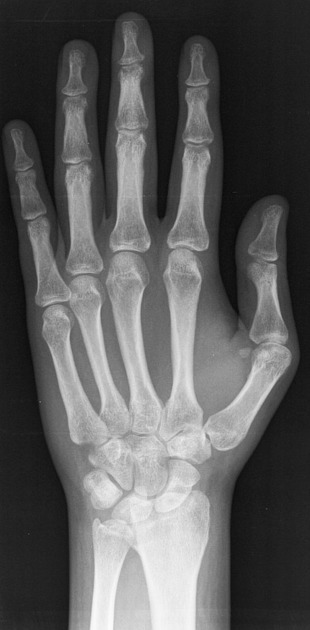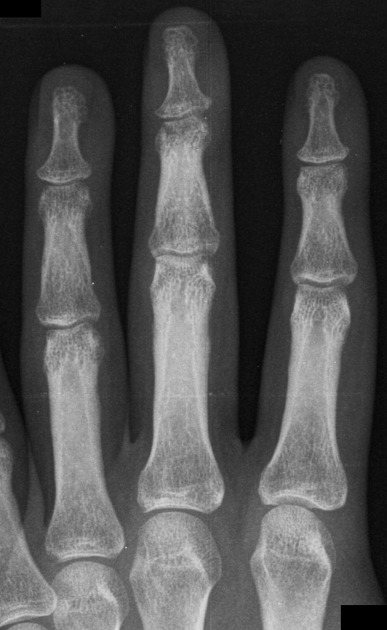Presentation
Excessive sweating and changes in skin color of the right hand seven months after traumatic nervous and tendinous transection.
Patient Data



Patchy osteopenia predominantly in the periarticular region of the distal interphalangeal and proximal interphalangeal joints of the 2nd, 3rd and 4th fingers. Cortical thinning of the bone is noted.

Same radiography. Zoomed view shows the findings better.
Case Discussion
The history of traumatic transection of the nerve is consistent with a type II CRPS (formerly known as causalgia). While in type I CRPS there is no underlying nerve lesion (formerly known as reflex sympathetic dystrophy).
Images courtesy of Dr Manolo Roiz.




 Unable to process the form. Check for errors and try again.
Unable to process the form. Check for errors and try again.